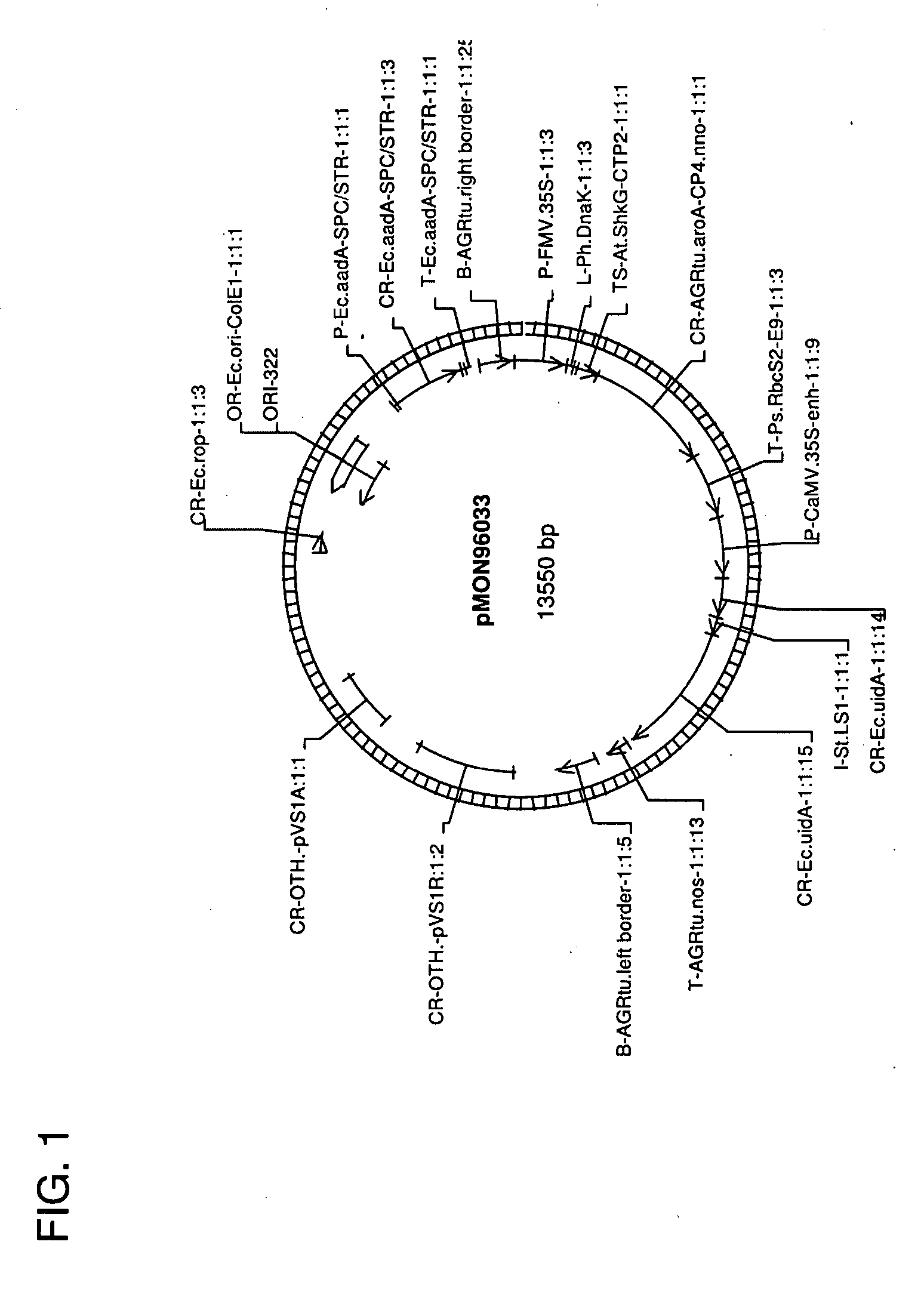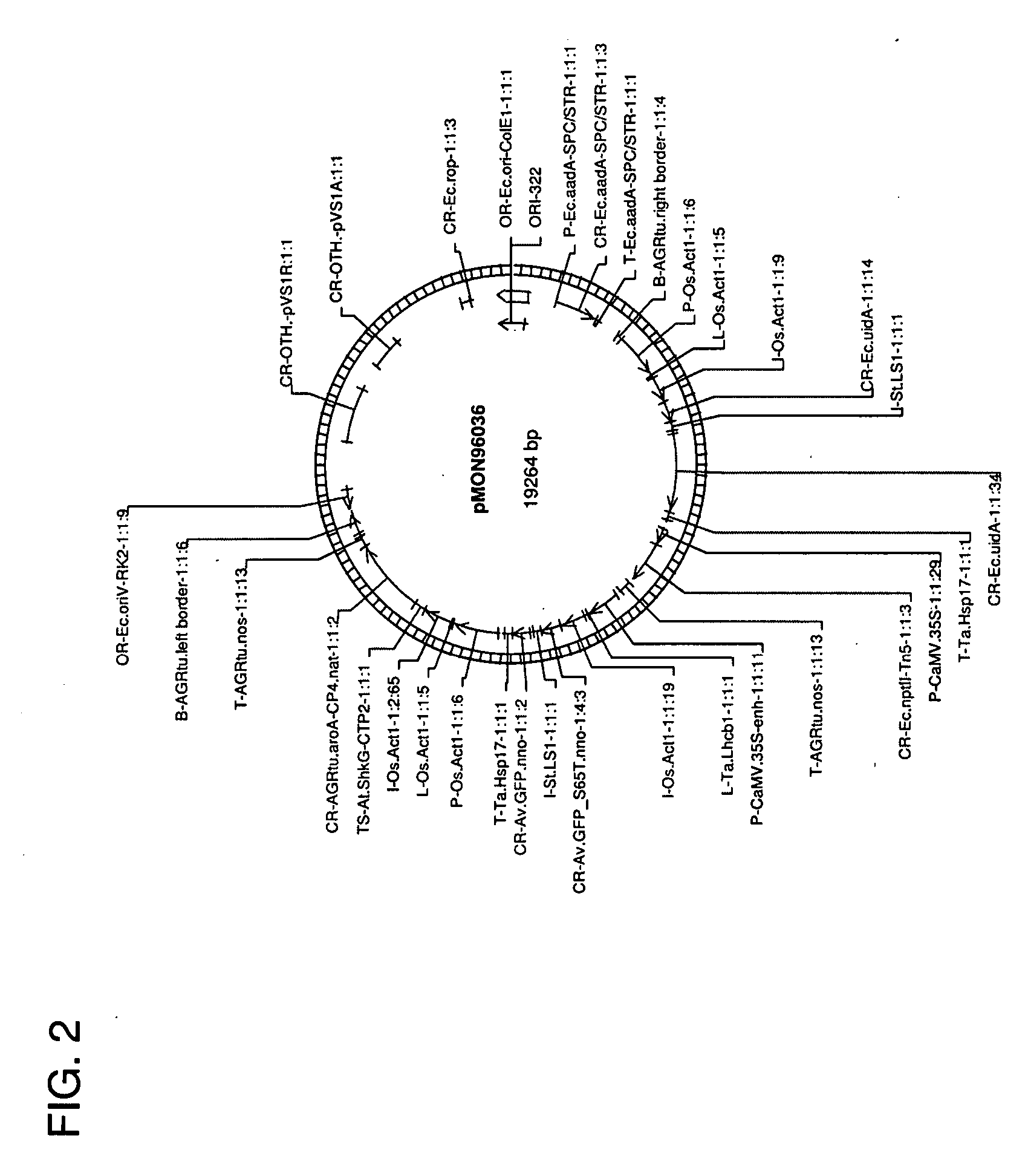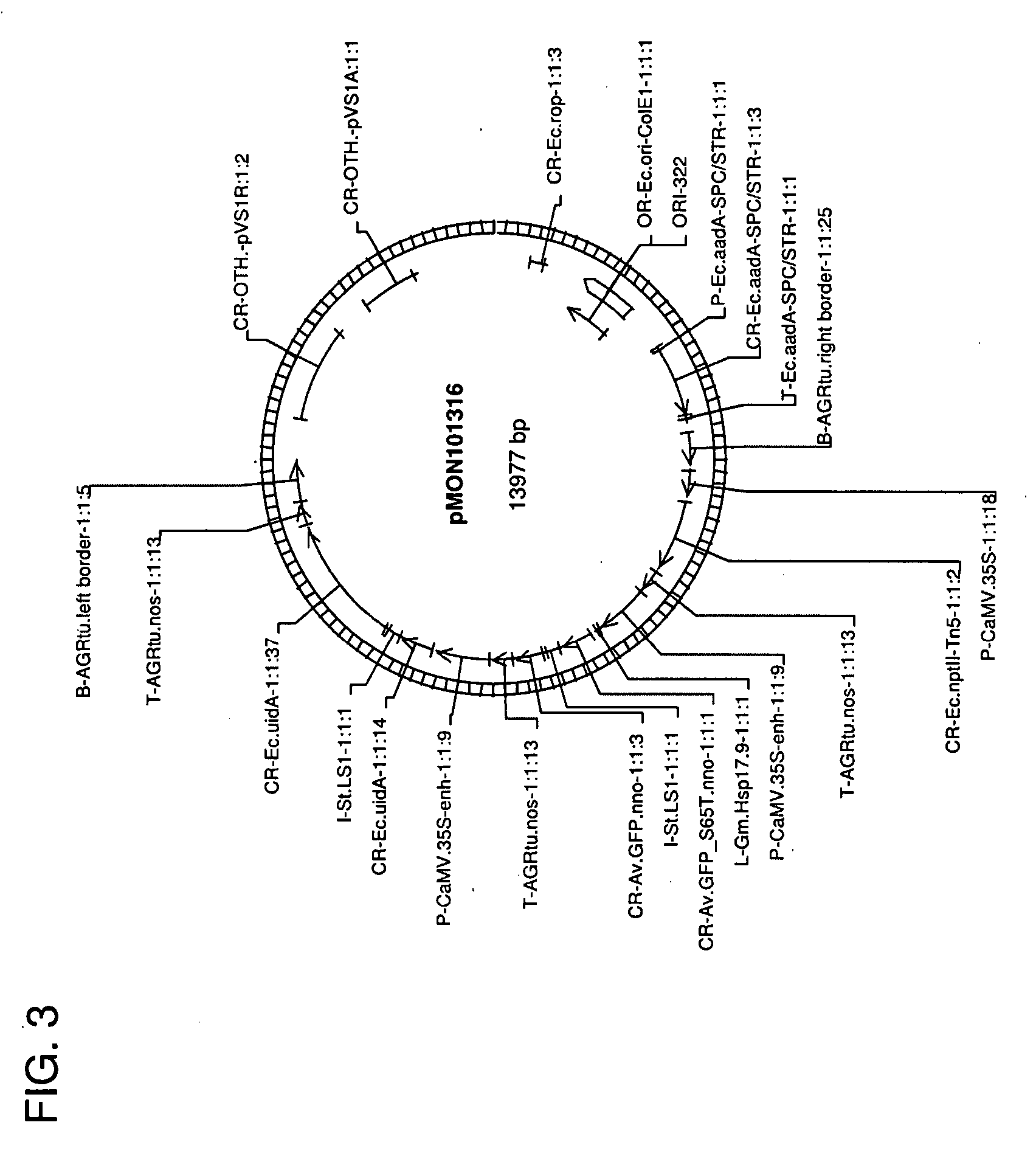Use of non-agrobacterium bacterial species for plant transformation
a technology of non-agrobacterium bacteria and plant, applied in the field of plant biotechnology, can solve the problems of low efficiency in others, inability to use certain tissues as transformation targets, and complicating analysis
- Summary
- Abstract
- Description
- Claims
- Application Information
AI Technical Summary
Benefits of technology
Problems solved by technology
Method used
Image
Examples
example 1
Rhizobium and Agrobacterium Strains
[0095]Agrobacterium tumefaciens AGL0 was obtained from ATCC (ATCC Number: BAA-100™, Lazo et al., 1991). Rhizobium leguminosarum strain Madison and Sinorhizobium meliloti SD630 were isolated from weed clover in a home garden in Madison, Wis., USA, and confirmed by sequencing the PCR product of a 16S rRNA amplified with the following primers: 5′ GAGAGTTTGATCCTGGCTCAG 3′ (Xd578; SEQ ID NO:1) and 5′ AAGGAGGTGATCCAGCCGCAG 3′ (Xd579; SEQ ID NO:2). Other Rhizobium strains were obtained from USDA Rhizobium collection center (Table 1). Rhizobium strains were grown in TY or MAG medium and Agrobacterium in LB medium. Strains are shown below and 16s rRNA sequences amplified in strains isolated are provided as SEQ ID NOs:24-30.
TABLE 1Agrobacterium and Rhizobium strainsStrain NameTi plasmidSourceA. tumefaciens AGL0pTiBo542ATCC; Lazo et al., 1991A. tumefaciens LBA4404pAL4404Hoekema et al., 1983A. tumefaciens AGL0CpTiBo542C (kanR)This studyA. tumefaciens AGL0Gp...
example 2
Transformation of Agrobacterium
[0096] The Agrobacterium competent cells were prepared by washing a log phase culture in LB medium with chilled deionized water and 10% glycerol, and stored at −80° C. Fifty microliters of thawed competent cells were mixed with 1 or 2 μl DNA on ice and electroporated in 1 mm gap curvet with 200 ohm resistance, 25 μF capacity and 1.8 kv using a BIO-RAD Gene Pulser® II device (BIO-RAD, Hercules, Calif.).
example 3
Construction of Ti Plasmids with an Antibiotic Selectable Marker Gene
[0097] To select Ti plasmids in Rhizobium spp., a homologous sequence was amplified from a corresponding Ti plasmid and inserted into a kanamycin resistance vector. The homologous sequence was used to integrate the kanamycin resistance gene into the Ti plasmid by homologous recombination.
[0098] To construct the pTiBo542C plasmid, the entire virC gene (Genbank accession number AB027257) from the AGL0 Agrobacterium strain was amplified with PCR using the following primers 5′ ACAATAATGTGTGTTGTTAAGTCTTGTTGC 3′ (Xd683 SEQ ID NO:3) and 5′ CTCAAACCTACACTCAATATTTGGTGAG 3′ (Xd684 SEQ ID NO:4) and Pfu polymerase (STRATAGENE, La Jolla, Calif.) and inserted into the TOPO cloning blunt vector (Invitrogen Carlsbad, Calif.) giving rise to an intermediate vector pMON67402 The intermediate vector was further ligated to a trfA fragment from pCGN11206 digested with PvuII / MscI, which resulted in construct pMON96913 (FIG. 6). The vec...
PUM
| Property | Measurement | Unit |
|---|---|---|
| Magnetic field | aaaaa | aaaaa |
| Magnetic field | aaaaa | aaaaa |
| Volume | aaaaa | aaaaa |
Abstract
Description
Claims
Application Information
 Login to View More
Login to View More - R&D
- Intellectual Property
- Life Sciences
- Materials
- Tech Scout
- Unparalleled Data Quality
- Higher Quality Content
- 60% Fewer Hallucinations
Browse by: Latest US Patents, China's latest patents, Technical Efficacy Thesaurus, Application Domain, Technology Topic, Popular Technical Reports.
© 2025 PatSnap. All rights reserved.Legal|Privacy policy|Modern Slavery Act Transparency Statement|Sitemap|About US| Contact US: help@patsnap.com



